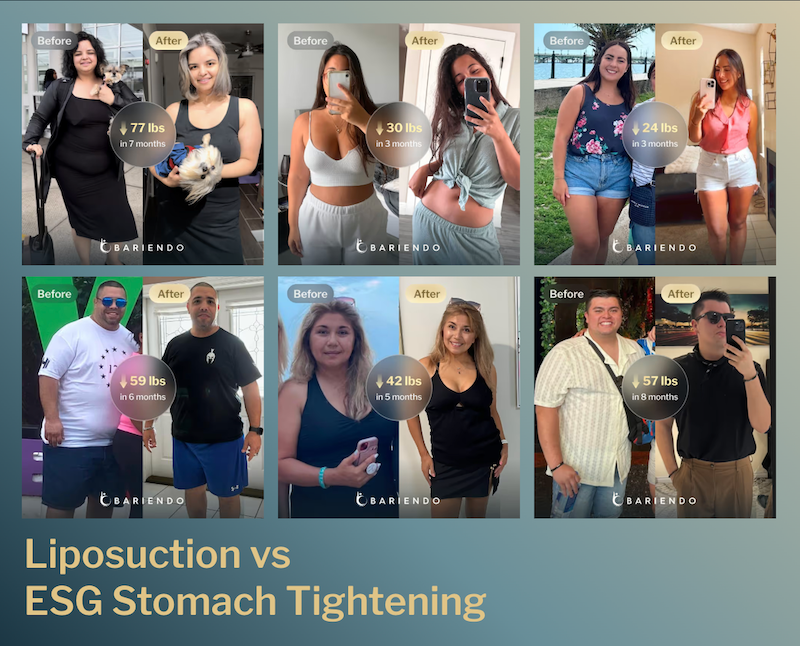Gastric Balloon Before and After: What to Expect
Wondering what to expect before and after gastric balloon? Learn all about non-surgical gastric balloon, from how it works to typical weight loss results.
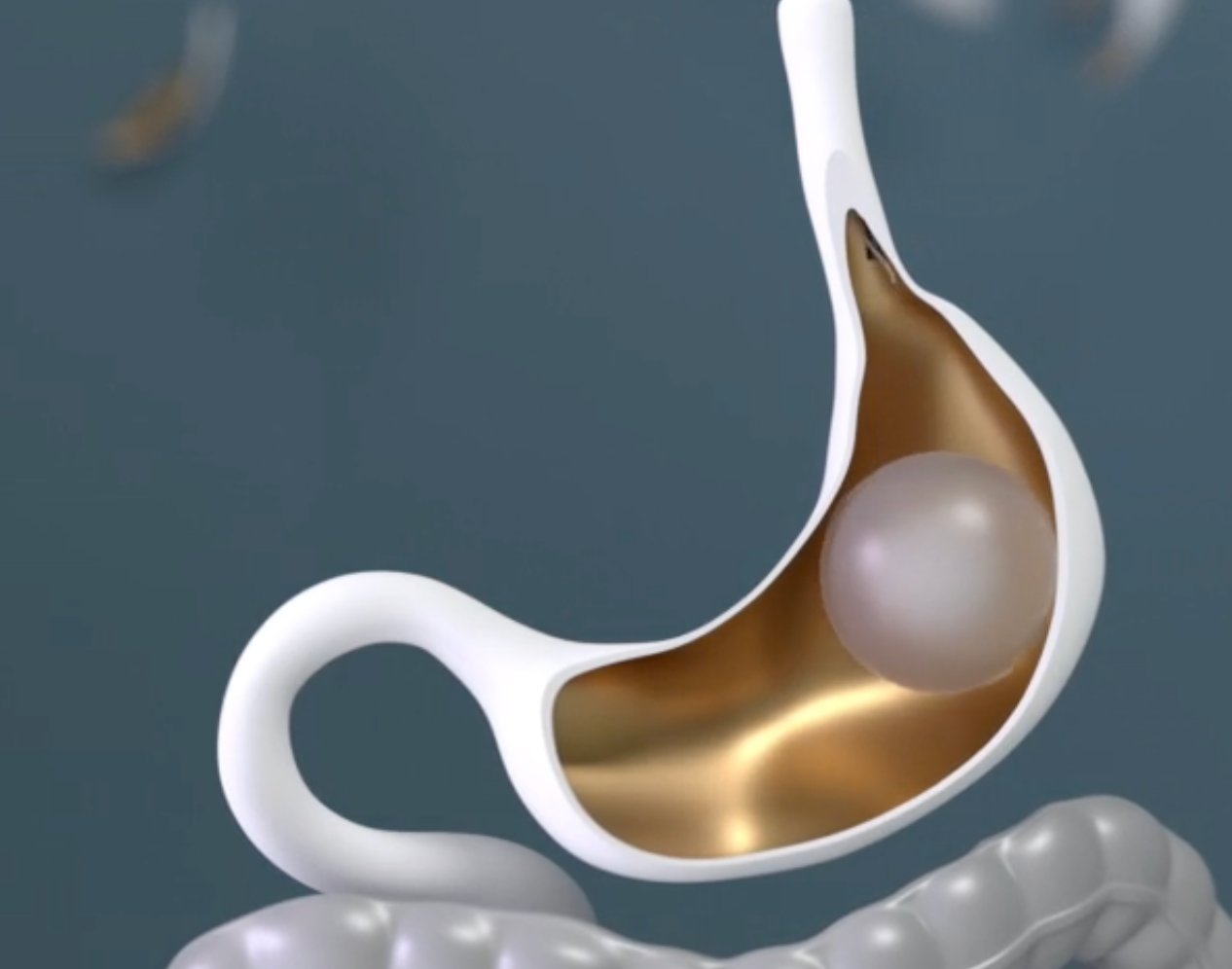
Bariendo Team
Team @ Bariendo
Are you struggling to lose weight with diet and exercise alone? Weight loss can be challenging, and trying so hard without seeing results can be frustrating. The gastric balloon is a popular option among those who need a little help losing weight but don’t want to undergo a surgical procedure or take weight loss medication.
Intragastric balloons are temporary weight loss tools placed in the stomach during a 15-minute endoscopic procedure. They help you lose weight by taking up space in the stomach, limiting caloric intake, regulating hunger, and supporting portion control. Gastric balloons empower patients to control their relationship with food and develop healthy lifestyle habits for sustained weight loss.
There’s no incision, scar, or hospital stay, and patients can return to work and normal activities in just a few days. After six months, the balloon is removed, leaving patients with the tools they need for long-term success. Let’s take a closer look at what to expect before and after the gastric balloon to help you decide if it’s right for you.
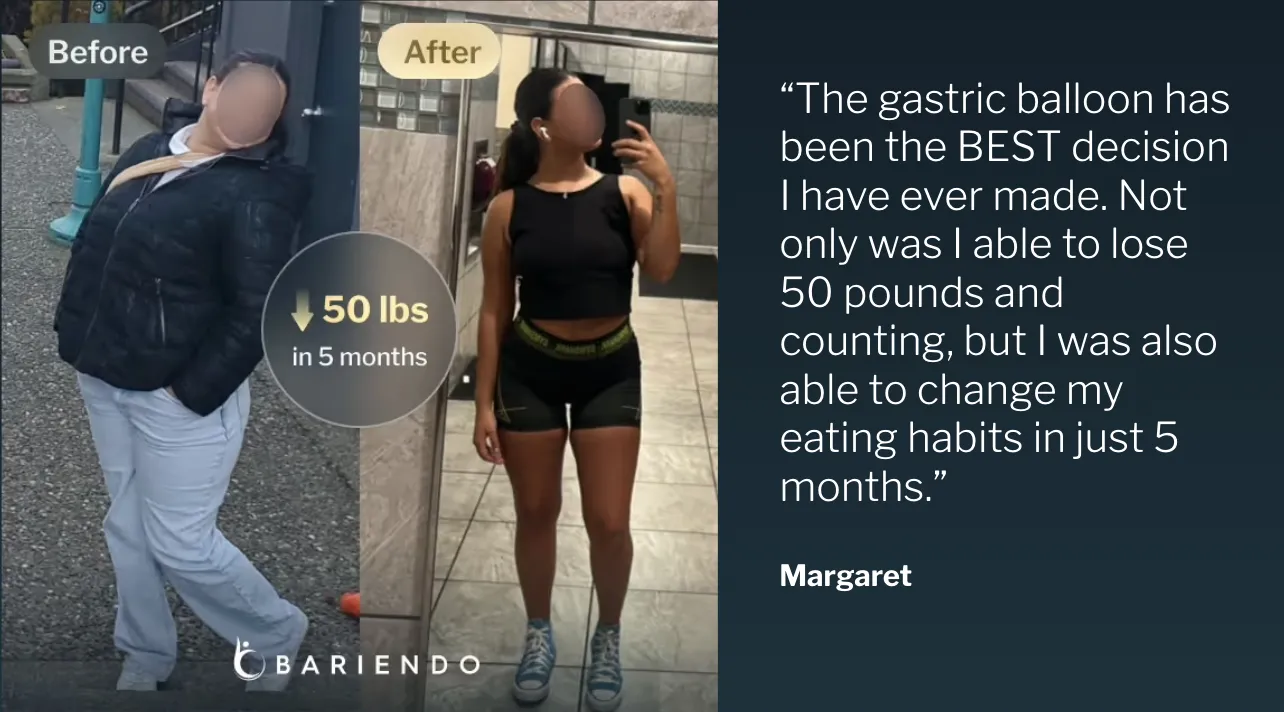
What to Expect Before Gastric Balloon
Preparing for a gastric balloon procedure is straightforward and sets the foundation for success. Each step is designed to ensure that patients are informed, comfortable, and ready to commit to the healthy lifestyle changes required for a successful weight loss journey. Here’s what to expect.
Consultation with a Physician
Before having a gastric balloon procedure, patients undergo a thorough evaluation with their healthcare provider. This step includes a discussion of your previous weight loss attempts, weight loss goals, current health status, and any pre-existing medical conditions that may impact your eligibility.
This is the perfect opportunity to ask any questions you may have. Your doctor will address your concerns, explain how the procedure works, and set expectations for the next steps and how to prepare for success.
Qualifying for the Procedure
Your healthcare provider will also determine your eligibility for the procedure during the initial consultation. To be a candidate for the gastric balloon, you must have a Body Mass Index (BMI) of at least 30 or a BMI of 27 to 29.99 with one of the following conditions:
- High blood pressure
- Diabetes
- High cholesterol
- Sleep apnea
- Fatty liver disease
Your doctor will typically request bloodwork as well, to ensure the procedure is safe for you.
After your health assessment, your doctor will ensure that you understand the benefits and risks of the procedure and inform you of potential alternatives to the treatment. This is to help ensure that you’re making an informed decision to undergo gastric balloon. Your doctor may proceed with the treatment once they have obtained your informed consent.
The Day of the Procedure
You will be asked not to eat or drink anything for 12 hours before the gastric balloon procedure. You may also be asked to take medication to prevent acid reflux from occurring while the procedure is being performed.
You will be asleep throughout the 15-minute procedure. Your doctor will insert an endoscope through your mouth, down into your stomach, with the deflated silicone balloon and specialized tools attached. Once in place, the balloon is filled with a saline solution to the appropriate size.
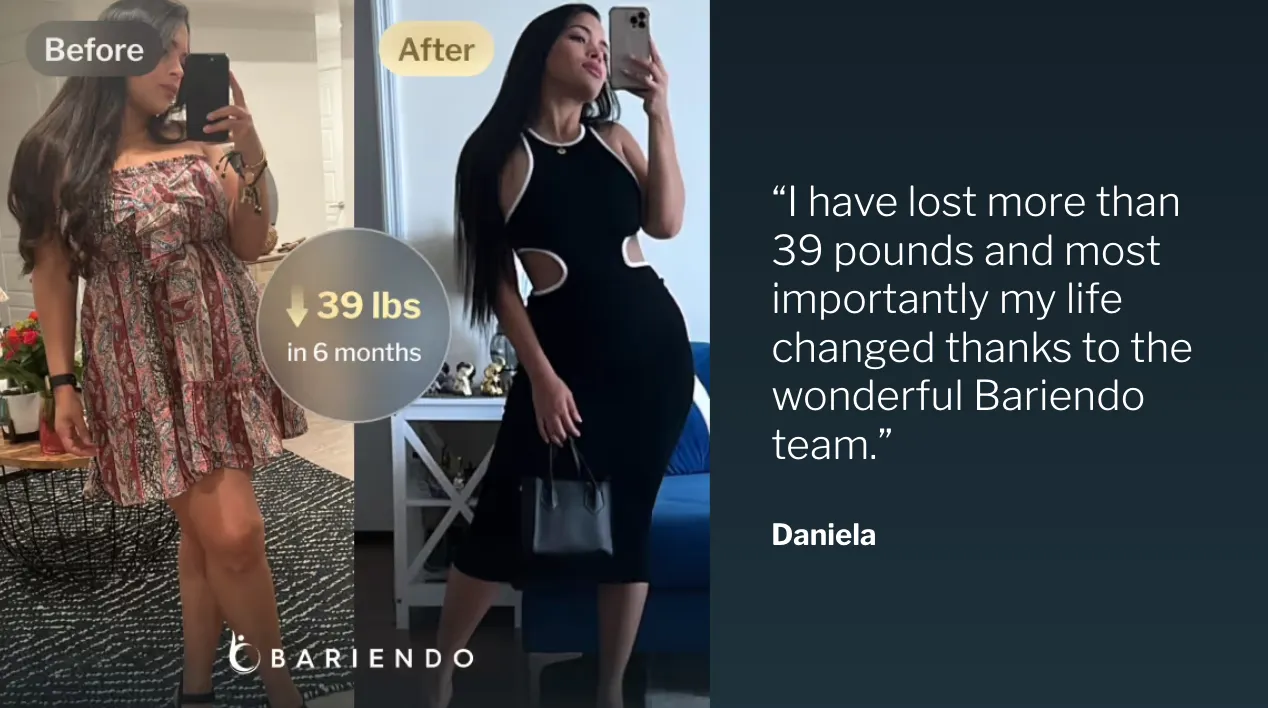
Recovery After the Gastric Balloon Procedure
Due to its noninvasive nature, recovering from a gastric balloon procedure is a short and manageable process. Your healthcare team will guide you through the necessary dietary changes and offer support to minimize any mild discomfort.
Immediately After the Procedure
After the procedure, you’ll be monitored for a few hours before returning home. You may feel groggy from the sedation, so it’s essential to arrange for someone to drive you home.
Some patients experience mild discomfort immediately after the procedure. Mild nausea and a sensation of fullness are also common as your stomach adjusts to the balloon. This is completely normal and subsides very quickly. Your doctor may prescribe medications to manage these symptoms, if needed, to ensure that you feel as comfortable as possible.
The First Few Days
Most patients take a few days off of work after a gastric balloon procedure. During this time, your diet will be limited to clear liquids to minimize discomfort. Gentle exercise, like short walks, is typically encouraged, but you should avoid placing any strain on your abdomen until your doctor gives the ok.
Most patients experience little to no pain during this time, but mild nausea, bloating, or cramping can occur. Staying hydrated and following your doctor’s guidance will ensure your recovery goes as quickly and smoothly as possible.
Returning to Your Normal Routine
Patients typically return to normal activities, including work and exercise, within just a few days after a non-surgical weight loss procedure like gastric balloon. Any initial side effects should subside within the first week, but if they persist, contact your doctor.
Your healthcare team will guide you through a gradual transition from a liquid diet to soft foods, followed by a balanced, portion-controlled meal plan. These guidelines are designed to help you build sustainable, healthy habits for long-term weight loss.
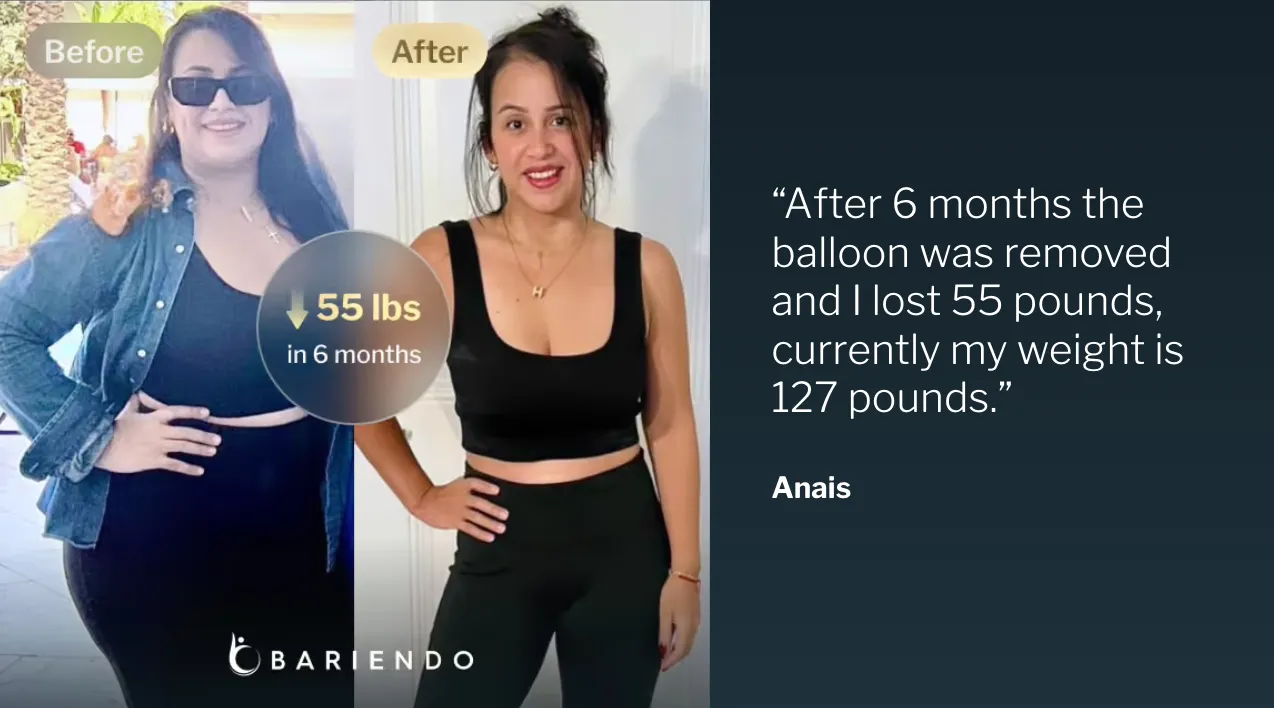
Life After Gastric Balloon
The gastric balloon is designed to jumpstart weight loss and help you develop the healthy habits required to maintain sustained weight loss. During the six months while the balloon is in place, your healthcare team will help you lay the foundation for long-term success.
Diet
A healthy, balanced diet is crucial for achieving and maintaining success with the gastric balloon. Your dietitian will help you develop a meal plan that prioritizes nutrient-dense, high-protein foods. You will learn to control your portion sizes, eat mindfully, and recognize when you’re full. This will maximize the effectiveness of the treatment and set the stage for sustainable, long-term weight management once the balloon is removed.
Lifestyle Changes
Embracing healthy lifestyle changes is the key to success after gastric balloon. Your healthcare team will help you develop an exercise program that aligns with your fitness level, mobility, and overall health. Finding an activity you enjoy, such as walking, yoga, or strength training, will help you stay consistent and improve muscle tone.
Beyond exercise, stress management and healthy sleep patterns also play critical roles in achieving healthy weight loss. The months while the balloon is in place provide an opportunity to rethink your relationship with food, exercise, and other healthy habits. Your healthcare team will be with you every step of the way, helping you create a lifestyle that continues to support your goals after the balloon is removed.
Weight Loss Expectations
While individual results may vary, most patients can expect to lose 10 to 15% of their total body weight within the six months the balloon is in place. While the balloon helps regulate portion sizes and hunger levels, the most successful weight loss results occur when it’s paired with a healthy diet and regular physical activity.
Potential Health Outcomes
Substantial weight loss can lead to significant improvements in overall health. Many patients experience better management of weight-related conditions, such as high blood pressure, type 2 diabetes, and high cholesterol. These changes can reduce your risk of serious health complications in the future.
Beyond improvements in related health conditions, our patients also report increased energy levels, improved mobility, and a greater ability to participate in activities they enjoy.
Mental and Emotional Impacts
The benefits of a gastric balloon procedure extend beyond weight loss and physical health. Many patients report a boost in self-confidence and improved mental well-being as they see steady progress and achieve their goals. Positive changes in body image and self-esteem can have a ripple effect, influencing other areas of life, such as relationships and work.
Removing the Balloon and Maintaining Results
At the end of six months, the gastric balloon is removed in a quick, endoscopic procedure. Patients typically resume normal activities shortly after. By this time, you will have developed healthier habits and a new relationship with food. You will have learned about portion control and balanced eating. Maintaining these habits is key to sustaining your weight loss and overall health.
Partnering with Bariendo for Your Gastric Balloon Procedure
Choosing the right healthcare provider is one of the most critical steps in your weight loss journey. At Bariendo, we combine innovative solutions, personalized care, and expert guidance to help you achieve lasting results.
Expertise and Innovation
We’re proud to offer cutting-edge, non-surgical weight loss solutions like gastric balloon and Endoscopic Sleeve Gastroplasty (ESG). Our co-founders, Dr. Christopher C. Thompson, the inventor of ESG Stomach Tightening, and Dr. Pichamol Jirapinyo, the Director of Bariatric Endoscopy Fellowship at Brigham and Women’s Hospital, are global leaders in the field of bariatric endoscopy.
Our co-founders are dedicated to advancing the field of endobariatrics through ongoing research, education, and patient-focused care. This ensures that every patient benefits from safe, effective treatments backed by the latest scientific advancements.
Proactive and Ongoing Follow-Up Care
We take pride in offering proactive, ongoing support to help you achieve and maintain your goals. From regular check-ins to diet and fitness coaching, our team of compassionate professionals is with you every step of the way. This hands-on approach ensures you have the support you need to stay on track and achieve long-term success.
Proven Patient Results
At Bariendo, we measure success by the transformative results our patients achieve. From significant weight loss to improved health and renewed confidence, our patients’ success stories speak for themselves. Many have shared how gastric balloon helped them regain control over their relationship with food, empowering them to make sustainable changes and achieve their health and weight loss goals.
Take the Next Step
Every weight loss journey is unique, and the gastric balloon offers a personalized starting point to achieve your goals. With the right procedure and dedicated support from Bariendo’s expert team, you’ll gain the tools, guidance, and confidence you need for long-term success.
Ready to take the next step? Schedule your free consultation today and learn how the gastric balloon can transform your approach to weight loss.
